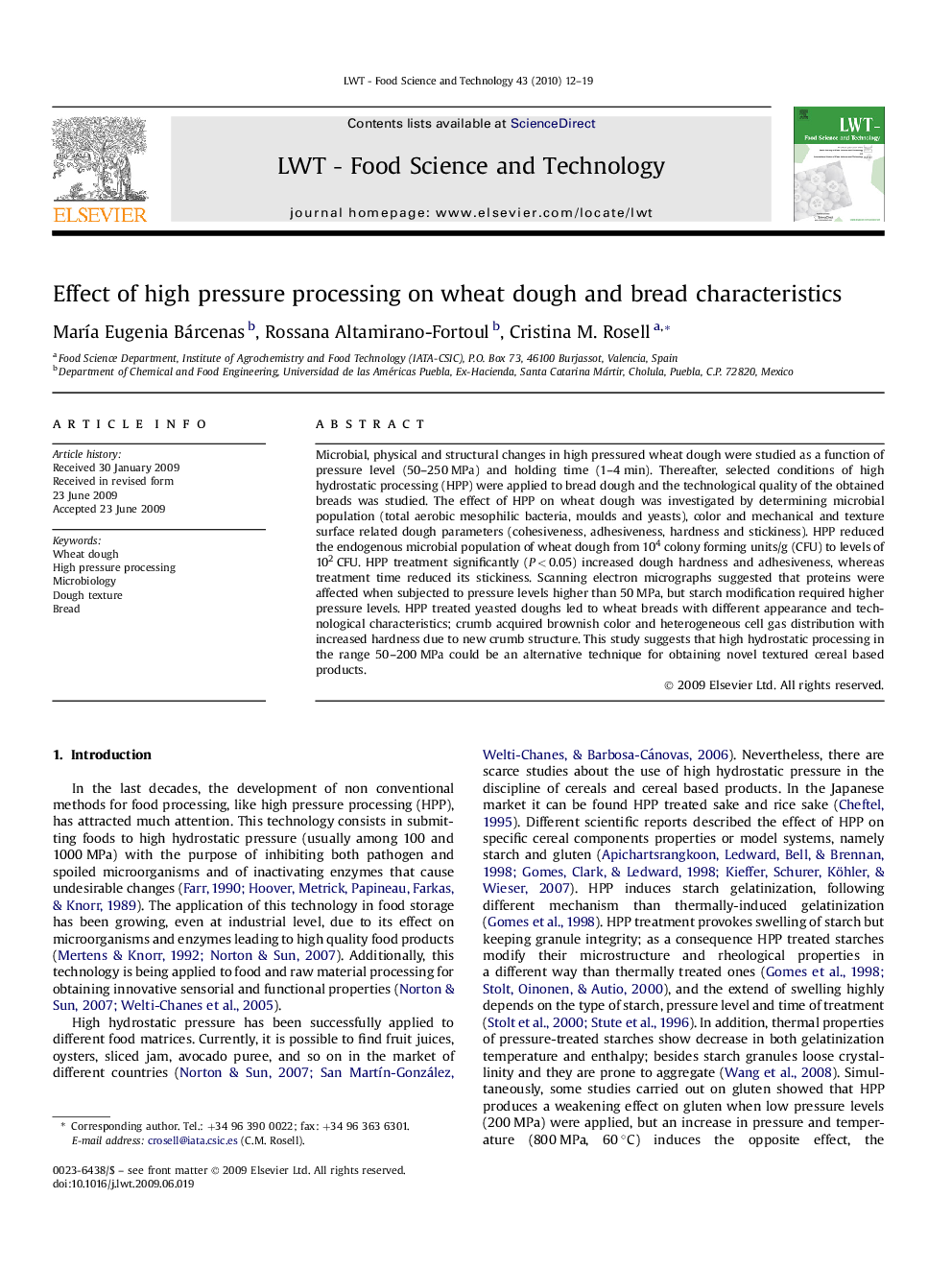| Article ID | Journal | Published Year | Pages | File Type |
|---|---|---|---|---|
| 4564124 | LWT - Food Science and Technology | 2010 | 8 Pages |
Microbial, physical and structural changes in high pressured wheat dough were studied as a function of pressure level (50–250 MPa) and holding time (1–4 min). Thereafter, selected conditions of high hydrostatic processing (HPP) were applied to bread dough and the technological quality of the obtained breads was studied. The effect of HPP on wheat dough was investigated by determining microbial population (total aerobic mesophilic bacteria, moulds and yeasts), color and mechanical and texture surface related dough parameters (cohesiveness, adhesiveness, hardness and stickiness). HPP reduced the endogenous microbial population of wheat dough from 104 colony forming units/g (CFU) to levels of 102 CFU. HPP treatment significantly (P < 0.05) increased dough hardness and adhesiveness, whereas treatment time reduced its stickiness. Scanning electron micrographs suggested that proteins were affected when subjected to pressure levels higher than 50 MPa, but starch modification required higher pressure levels. HPP treated yeasted doughs led to wheat breads with different appearance and technological characteristics; crumb acquired brownish color and heterogeneous cell gas distribution with increased hardness due to new crumb structure. This study suggests that high hydrostatic processing in the range 50–200 MPa could be an alternative technique for obtaining novel textured cereal based products.
